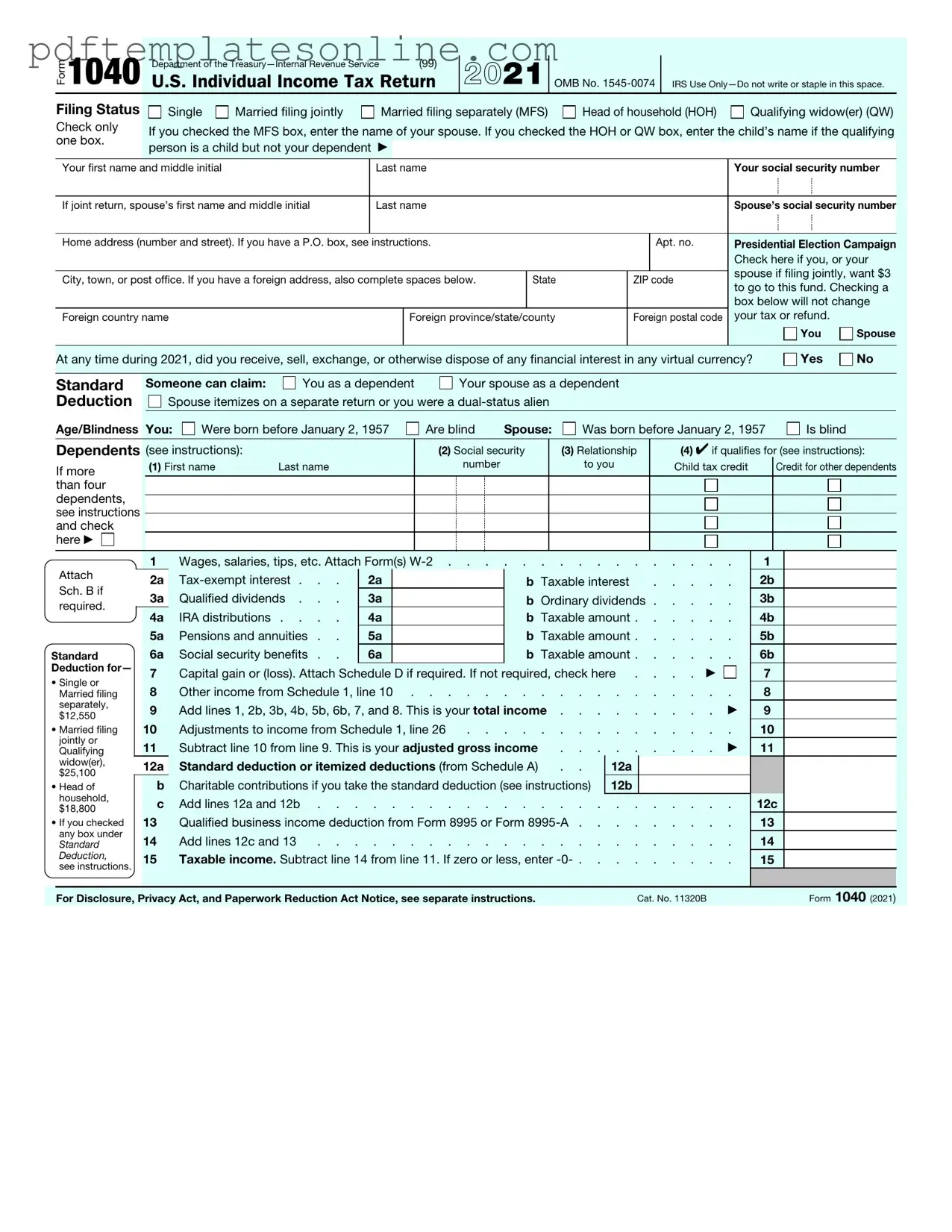Filling out the IRS 1040 form can be a daunting task, and many individuals make common mistakes that can lead to delays or complications. One prevalent error is incorrect personal information. This includes misspellings of names, wrong Social Security numbers, or incorrect addresses. Such inaccuracies can cause processing issues and may even result in a rejected return.
Another frequent mistake involves omitting income. Some people forget to report all sources of income, such as freelance work, side jobs, or interest from bank accounts. Even small amounts can add up, and failing to report them can lead to penalties or audits.
Many filers also struggle with deduction errors. Whether it’s failing to claim eligible deductions or incorrectly calculating them, this can significantly impact the amount of tax owed or the refund expected. It’s essential to understand what deductions apply and to keep accurate records.
Additionally, math errors are surprisingly common. Simple addition or subtraction mistakes can lead to incorrect calculations of tax owed or refund amounts. Double-checking all figures can help avoid this issue.
Another mistake is not signing and dating the form. A return that is not signed is considered invalid. This may seem minor, but it can delay processing and lead to unnecessary complications.
Some individuals also forget to include necessary attachments. This includes W-2 forms, 1099 forms, and any other supporting documentation. Failing to include these documents can result in processing delays or additional requests for information from the IRS.
Lastly, many people neglect to file on time. Missing the deadline can result in penalties and interest on any taxes owed. It’s crucial to be aware of filing deadlines and to plan ahead to ensure timely submission.
